
How to Use Adafruit HTS221: Examples, Pinouts, and Specs
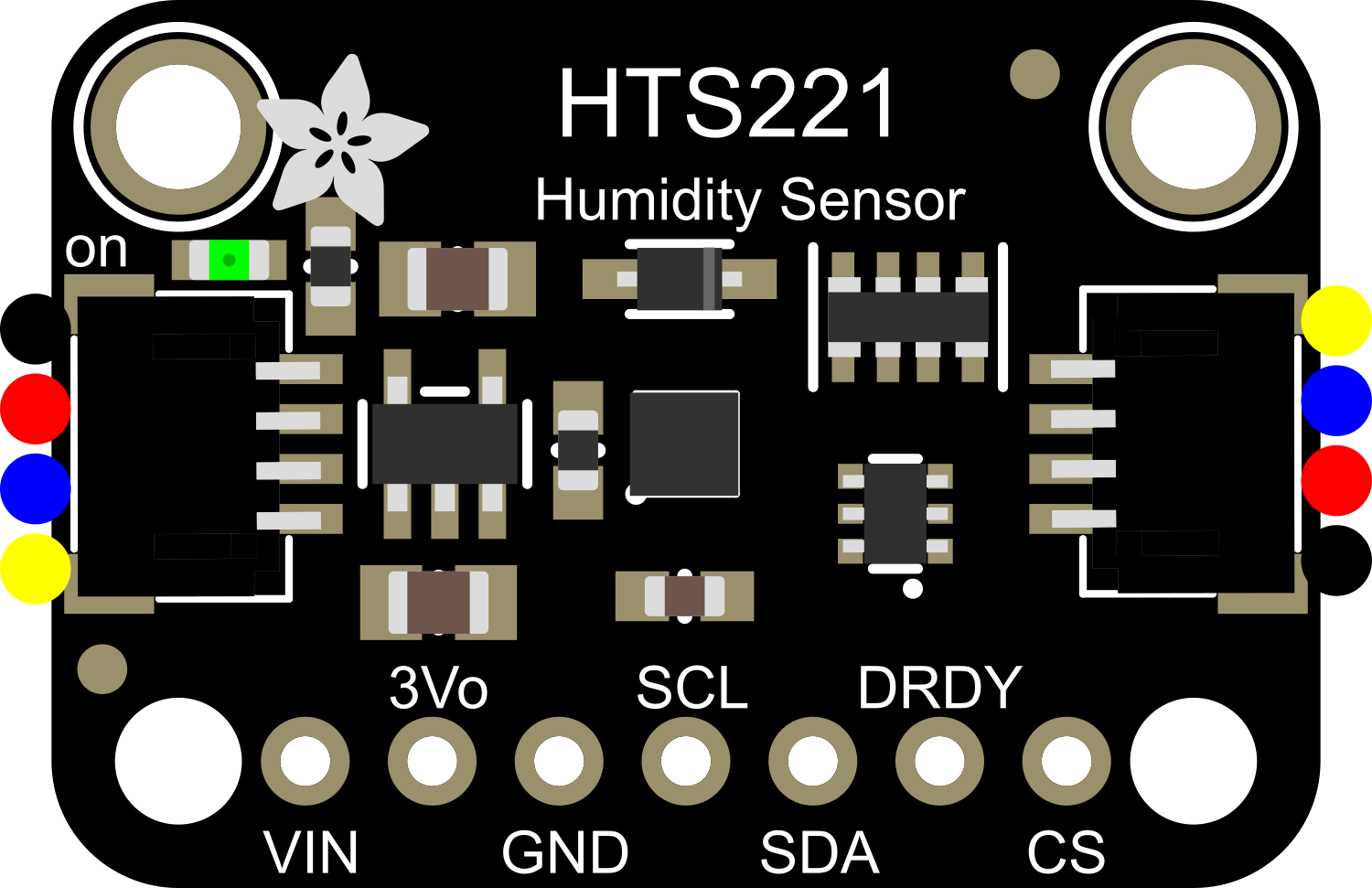
 Design with Adafruit HTS221 in Cirkit Designer
Design with Adafruit HTS221 in Cirkit DesignerIntroduction
The Adafruit HTS221 is a high-precision sensor module designed for acquiring environmental data by measuring both temperature and humidity. Its compact form factor and low power consumption make it an ideal choice for a variety of applications, including weather stations, home automation systems, and IoT devices. The sensor communicates over the I2C interface, allowing for easy integration with microcontrollers such as the Arduino UNO.
Explore Projects Built with Adafruit HTS221
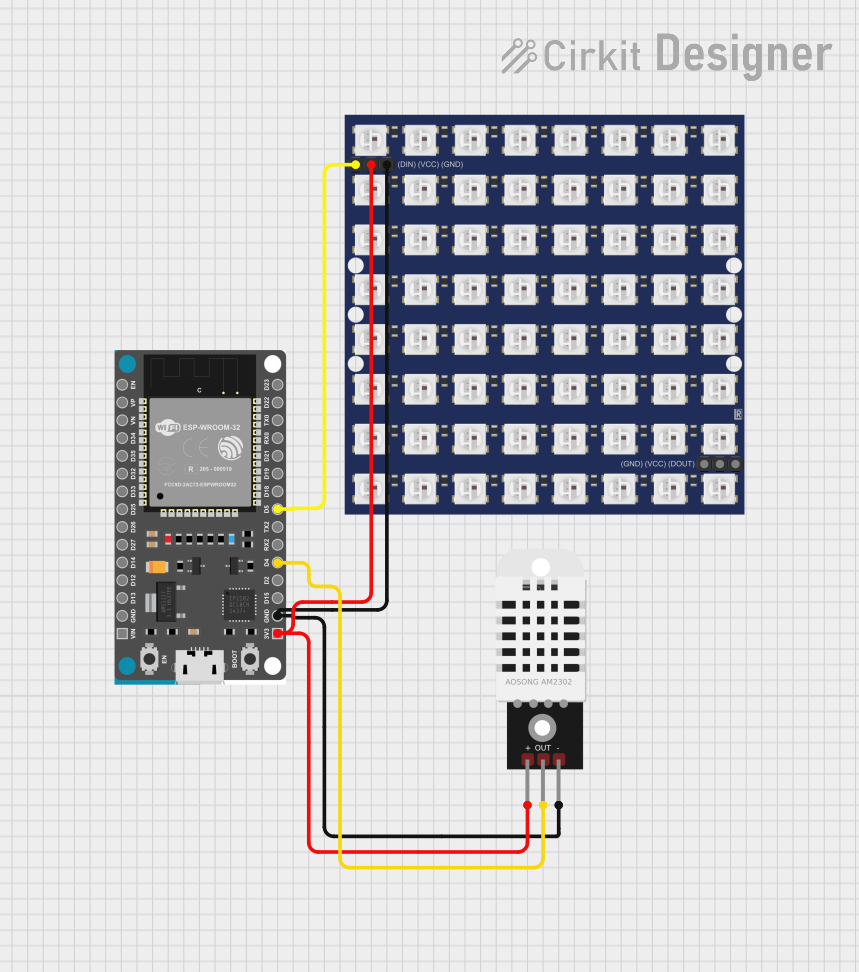
 Open Project in Cirkit Designer
Open Project in Cirkit Designer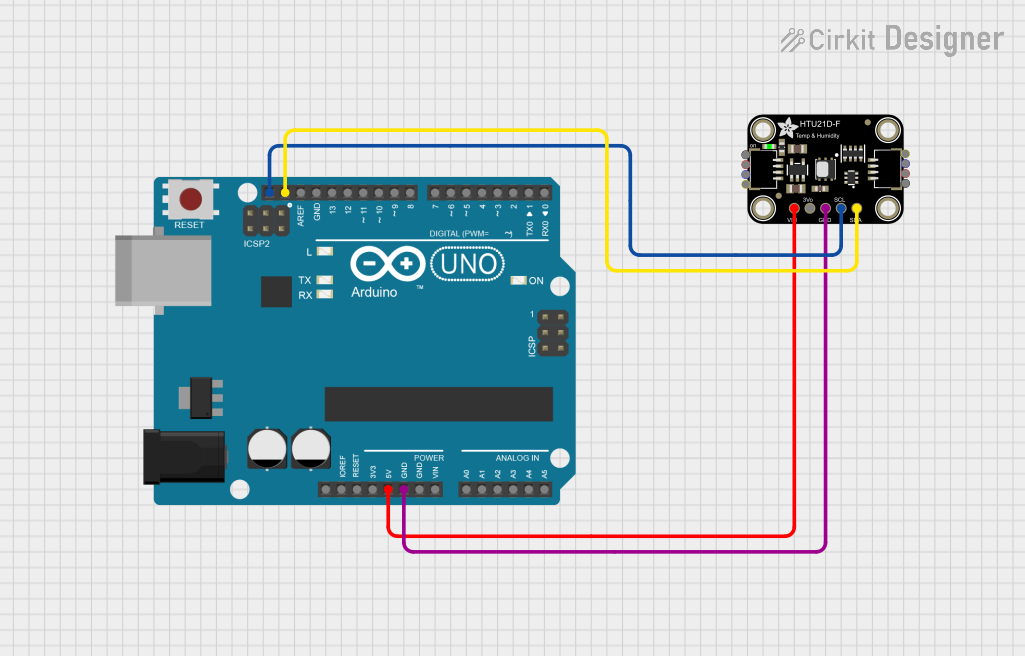
 Open Project in Cirkit Designer
Open Project in Cirkit Designer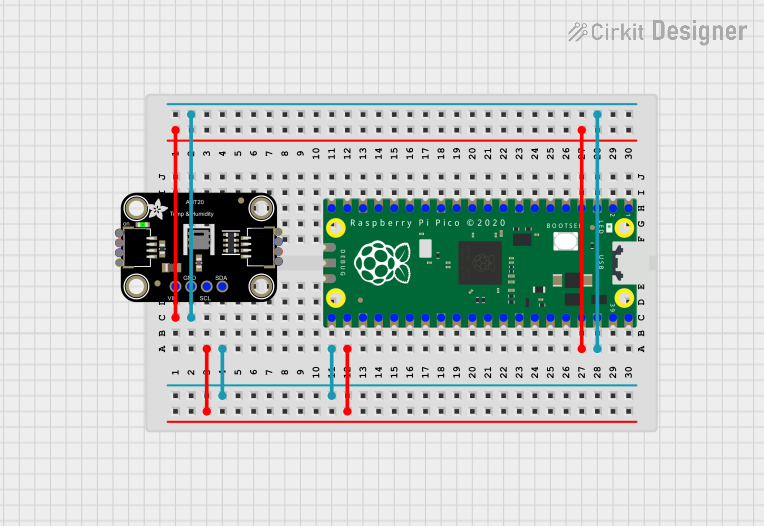
 Open Project in Cirkit Designer
Open Project in Cirkit Designer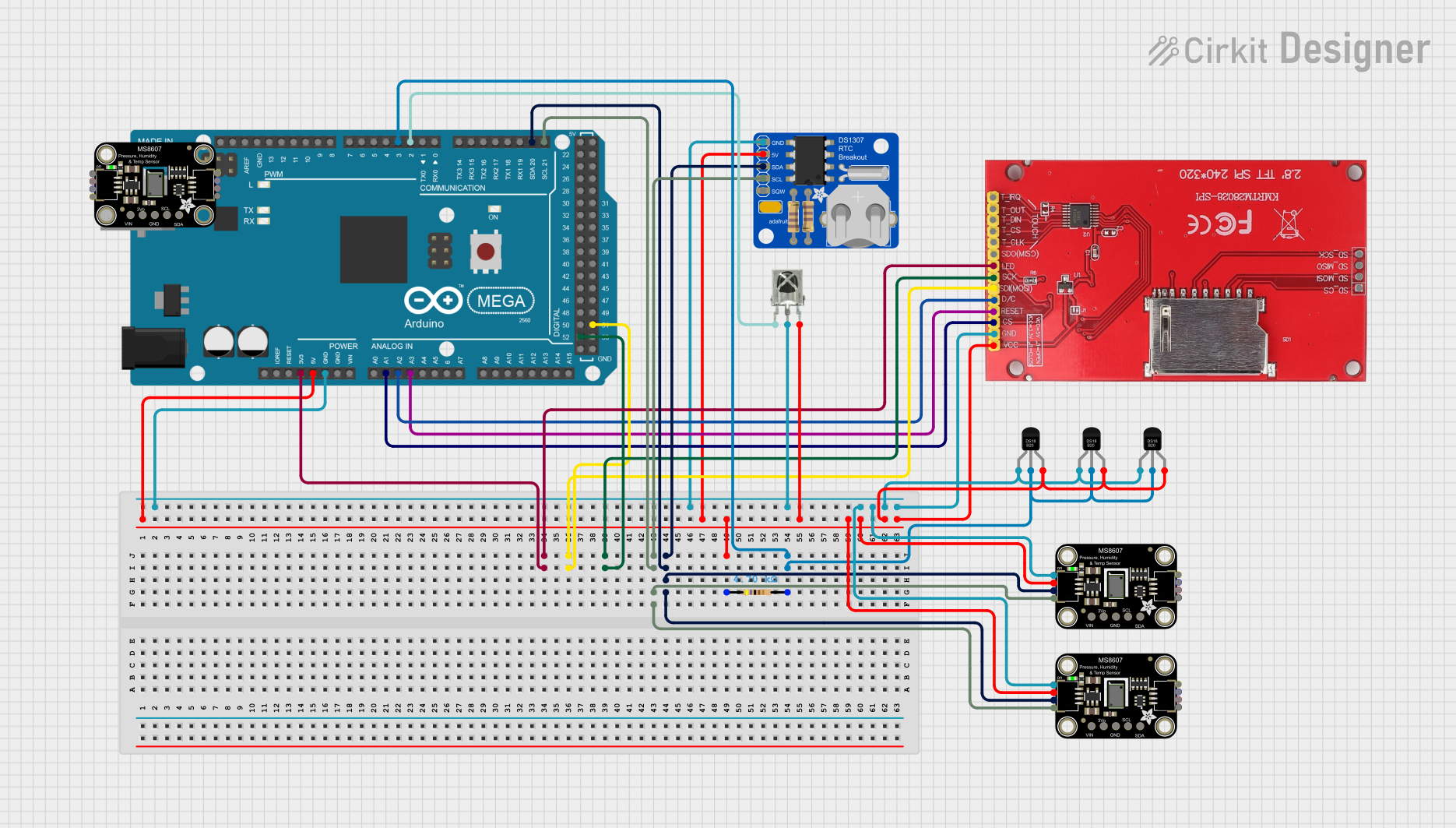
 Open Project in Cirkit Designer
Open Project in Cirkit DesignerExplore Projects Built with Adafruit HTS221

 Open Project in Cirkit Designer
Open Project in Cirkit Designer
 Open Project in Cirkit Designer
Open Project in Cirkit Designer
 Open Project in Cirkit Designer
Open Project in Cirkit Designer
 Open Project in Cirkit Designer
Open Project in Cirkit DesignerTechnical Specifications
Key Features
- Relative Humidity Range: 0 to 100%
- Temperature Range: -40°C to +120°C
- Humidity Accuracy: ± 3.5% RH (20 to +80% RH)
- Temperature Accuracy: ± 0.5°C (15 to +40°C)
- Communication Interface: I2C
- Supply Voltage: 1.7V to 3.6V
- Average Current Consumption: 2µA (humidity and temperature in low-power mode)
Pin Configuration and Descriptions
| Pin Number | Name | Description |
|---|---|---|
| 1 | VDD | Power supply (1.7V to 3.6V) |
| 2 | GND | Ground reference for power supply |
| 3 | SDA | I2C data line |
| 4 | SCL | I2C clock line |
| 5 | DRDY | Data Ready output (optional use) |
Usage Instructions
Integration with Arduino UNO
Connecting the Sensor:
- Connect VDD to the 3.3V output on the Arduino UNO.
- Connect GND to one of the GND pins on the Arduino UNO.
- Connect SDA to the A4 pin (SDA) on the Arduino UNO.
- Connect SCL to the A5 pin (SCL) on the Arduino UNO.
- The DRDY pin can be left unconnected if not used.
Library Installation:
- Install the Adafruit HTS221 library using the Arduino Library Manager or download it from the Adafruit GitHub repository.
Sample Code:
#include <Wire.h> #include <Adafruit_Sensor.h> #include <Adafruit_HTS221.h> Adafruit_HTS221 hts; void setup() { Serial.begin(9600); // Wait for serial monitor to open while (!Serial) { delay(10); } Serial.println("Adafruit HTS221 test!"); if (!hts.begin()) { Serial.println("Failed to find HTS221 chip"); while (1) { delay(10); } } Serial.println("HTS221 Found!"); } void loop() { sensors_event_t humidity, temp; hts.getEvent(&humidity, &temp);// populate temp and humidity objects with fresh data Serial.print("Temperature: "); Serial.print(temp.temperature); Serial.println(" degrees C"); Serial.print("Humidity: "); Serial.print(humidity.relative_humidity); Serial.println("% rH"); delay(500); }- Ensure that the code comments do not exceed 80 characters per line.
Important Considerations and Best Practices
- Always use a logic level converter if you are interfacing the HTS221 with a 5V microcontroller to avoid damaging the sensor.
- Place the sensor away from heat-generating components to prevent false readings.
- For accurate measurements, allow the sensor to acclimatize to the environment before taking readings.
- Avoid touching the sensor element directly as it may affect the readings.
Troubleshooting and FAQs
Common Issues
- Sensor Not Detected: Ensure that the wiring is correct and that the sensor is properly powered. Check the I2C address and connections.
- Inaccurate Readings: Make sure the sensor is not placed near heat sources or in direct sunlight. Allow it to acclimatize to the environment.
FAQs
Q: Can the HTS221 be used with a 5V microcontroller? A: Yes, but a logic level converter is required to shift the I2C signals to 3.3V.
Q: How can I calibrate the sensor? A: The HTS221 comes factory-calibrated. If further calibration is needed, refer to the sensor's datasheet for calibration procedures.
Q: Is the HTS221 waterproof? A: No, the HTS221 is not waterproof. Protect it from moisture and condensation.
For further assistance, consult the Adafruit HTS221 datasheet and the Adafruit support forums.